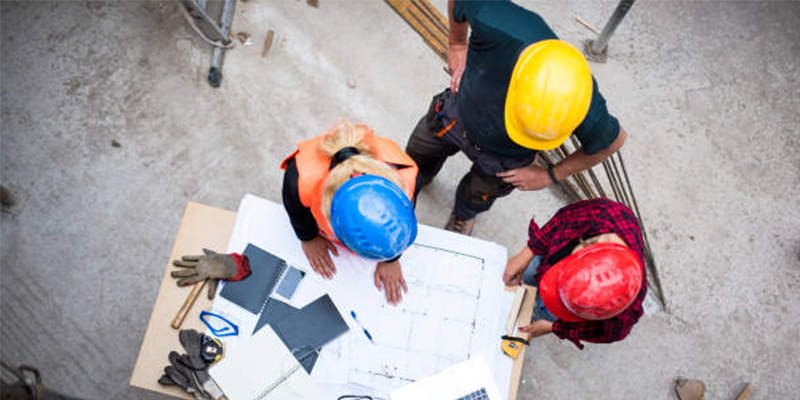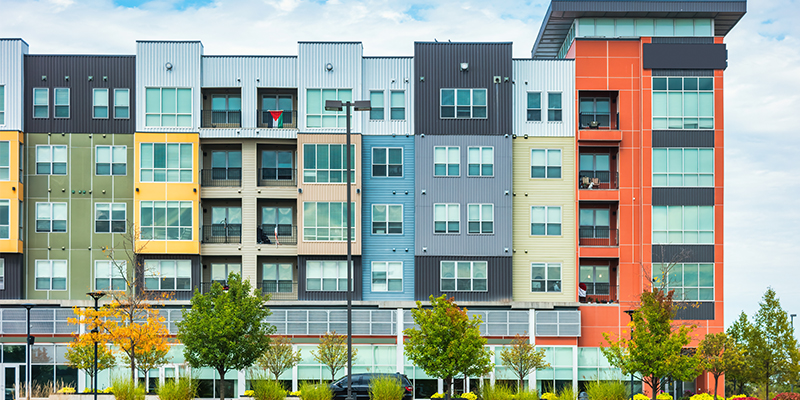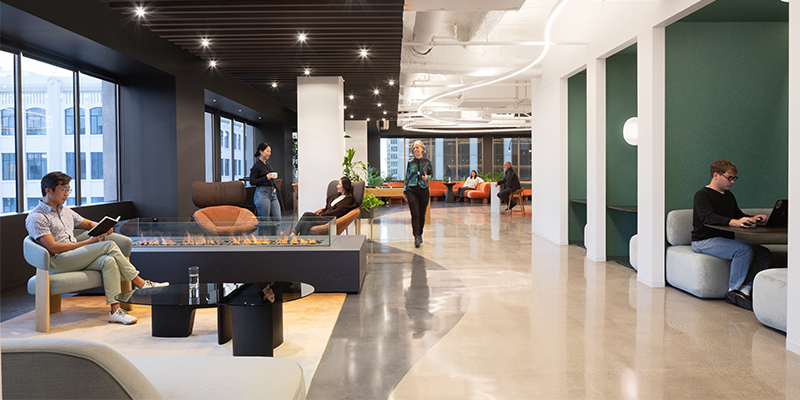The right design may be the key to achieving the flexible, experiential physical workplace of the future – but it’s only half the battle. Even the most flawless blueprint requires seamless construction delivery to unlock its maximum potential.
Smooth construction may sound like an oxymoron given conventional project management, where the risks of delay, hassles and cost overruns are higher than ever due to increased supply chain headaches, labor shortages and other construction sector impacts. Combined with potential costly and time-intensive change orders and the realities of the site at construction, misalignment with other phases in a workplace project has intensified in the COVID-19 era.
It doesn’t have to be that way. By uniting strategic, design and constructions teams under one umbrella, you can ensure process efficiency, reduce risk and avert costly misunderstandings.
In this blog series, we’ve explored hybrid workplace strategy and how to design a healthier, more human workplace. Now, let’s dive into how to bring those efficiencies to life by enabling a smooth, integrated process from strategy, design, construction, and delivery.
Six ways to realize your office construction vision
While every construction journey is different, some universal best practices may help you avoid risk and meet your project goals along the way. Consider the following tips as you rethink the future workplace:
1. Create a plan with clear milestones that you can track and meet along the way.
Creating and sticking to an informed master project schedule is key to success through and beyond your office buildout. Project leaders should measure progress against each milestone in the project schedule, from strategy and design to ribbon-cutting. Documentation and proactive communications throughout the project with your internal teams and external stakeholders can help keep you on track and ahead of any potential issues like cost overruns or budget management.
2. Safe construction practices are a must.
Health and safety issues are always critical, but especially during the pandemic. In addition to the ethical responsibility to promote worker safety, sickness or injury can also trigger delays and overspending. Confirm project partners perform all operations in the safest manner possible, consistent with good construction, environmental, health and safety practices. From physical distancing and daily health checks to hard-hat and equipment protocol, effective safety programs start at the top and include a plan for adoption and compliance.
3. It’s time to rethink procurement.
Choosing the right path to procurement can be challenging due to regulatory frameworks, corporate governance and other factors. Traditional procurement methods that task project management teams with allocating separate designer and construction partners almost always cause delays, frustrations and cost overruns – and as the client, you’ll almost always pay the price.
Move past this outdated, stressful model with a delivery service provider who can integrate design and construction teams and effectively transfer any risk from your shoulders to theirs.
4. Leverage construction technology.
COVID-19 may have sped up the onset of virtual site tours, but transformational construction delivery tech will outlive the pandemic [For more information on this topic, read this 2021 report on emerging construction technologies from the NAIOP Research Foundation]. For example, 360-degree construction photo documentation software can enable project teams and stakeholders to virtually track and tour job sites, driving efficiency, streamlining communications, and empowering smart decision-making.
That’s why Tracy Lea Neff, Unispace Operations Director for North America, encourages her team to push the boundaries of construction to find effective new tools.
“Integrating the right technology has been key to our ability to complete projects on time and in budget through these disruptive times,” she says. “Our virtual toolset has allowed us to get on site virtually when we couldn’t be there in person, bringing critical real-time visibility while improving workflow, tracking, and collaboration.”
5. Anticipate risk and plan accordingly.
Supply chain challenges happen, but a strategic partner will know how to spot these and other potential technical constraints ahead of time. To keep disruptions minimal, they may build in extra time to avoid costly surprises down the line or use progressive budgeting to help absorb project risk and give you cost certainty.
Whatever risk management looks like for your project, be sure to get clear and realistic expectations early in the game.
6. Look for a workplace realization partner who understands your concerns – and can demonstrate a track record of delivery excellence.
Having the right partner beside you from design through construction can make or break your ability to achieve results more quickly, without sacrificing quality, and on budget. Do your homework to find a partner who you can trust, who will work with you to find the right solution fast, who communicates clearly and honestly, and ultimately, who measures success by your happiness.
By upending the siloed design-versus-build paradigm and seamlessly blending strategy, design, and construction delivery under one common roof, you can create a modern, experiential office — without the misalignments, delays and unforeseen costs of inside-the-box construction strategy. Skip the time-consuming, cost feasibility phase with cost predictability and getting a faster, high-quality project completion.
Is your organization ready to create a more resilient, future-friendly workplace?
Read Part 1: Hybrid Goals? Reinventing the Office, Faster and Better Than Before
Read Part 2: Designing the Experiential Workplace of the Future








